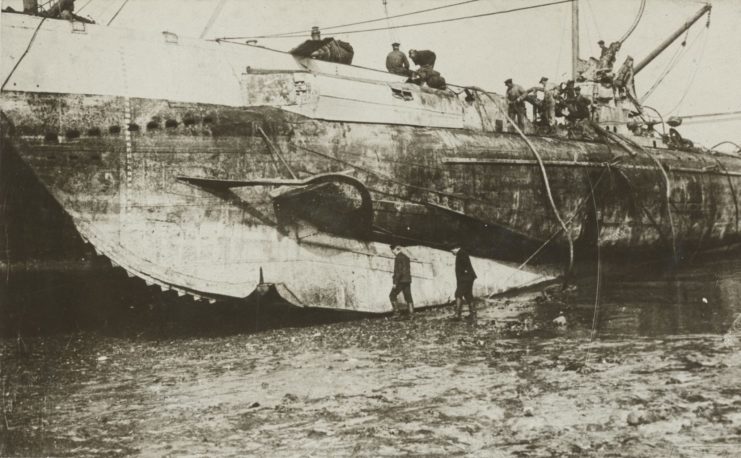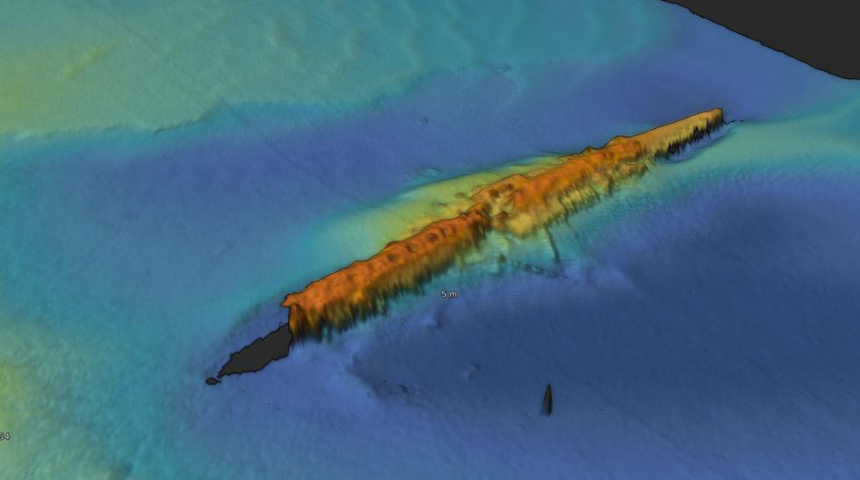On the 18th November 1917, German submarine UC-47 was sunk by the Royal Navy. She lay quietly on the North Sea floor until surveyed for the first time in over a century.
Dr. Rodrigo Pacheco-Ruiz, an archaeologist with deep-sea archaeological expertise from the Centre for Maritime Archaeology at the University of Southampton, collaborated in a team with two offshore survey companies, Reach Subsea and MMT.
The team was asked to survey the wreck of the UC-47, as part of an undersea survey undertaken on behalf of Tolmount Development, for the construction of a new pipeline in the North Sea, approximately 20 miles off the Yorkshire coast of England.

The UC-47 had the reputation of being lucky in the German Imperial Navy, and she enjoyed considerable success in her year-long career, sinking 50 vessels. On 18th November 1917, she was caught unawares on the surface by HMS P-57, a Royal Navy Patrol Boat.
P-57 rammed the submarine, and then depth charged her, blowing an enormous hole in her port side. The submarine sank with all hands.
Stephen Fisher, a maritime historian, says that Royal Navy divers dived to the UC-47 on the following day and retrieved valuable intelligence material including charts and codebooks. Until the restrictions of the current pandemic ease, historians cannot access the materials they need to determine if the Navy did, in fact, dive on the wreck.
In an interview with Hydro, Dr. Rodrigo Pacheco-Ruiz said that the wreck of the UC-47 was marked on charts as a shipwreck, and extraordinarily little was known about the condition of the submarine.
He went on to say that he felt privileged to be a member of the team surveying the sub, to find it in such good condition, and to learn something of its history.
The wreck of the UC-47 lies in 50 meters of water. The team used a combination of high-resolution geophysical equipment deployed on the most modern robotic vessels to undertake the survey. The images created show that the UC-47 is remarkably well preserved.
The hull has been preserved and is intact along its length. She is lying on top of the seafloor, and the damage that caused her to sink is visible on her port side. Debris from the vessel, including one of her torpedo tubes, is scattered around her on the seabed.
Dr. Rodrigo Pacheco-Ruiz, a co-director of the Offshore Archaeological Research project (OAR) from the University of Southampton, said that the project is designed to study undersea archaeological sites that are inaccessible through traditional underwater archaeological practices.
They use modern technology and access resources through partnerships with industry experts to access these sites.

The targeted sites are often far offshore and lie in deep water, so they can only be accessed by utilizing highly specialized undersea equipment.
This equipment is not easy to come by for the average underwater archaeologist, which provides a significant barrier to the sites being surveyed.
Another Article From Us: One of the Most Daring and Romantic Naval Feats of History
The team hopes to return to the UC-47 in the future to complete their investigation and to provide a training ground for students of maritime archaeology.
